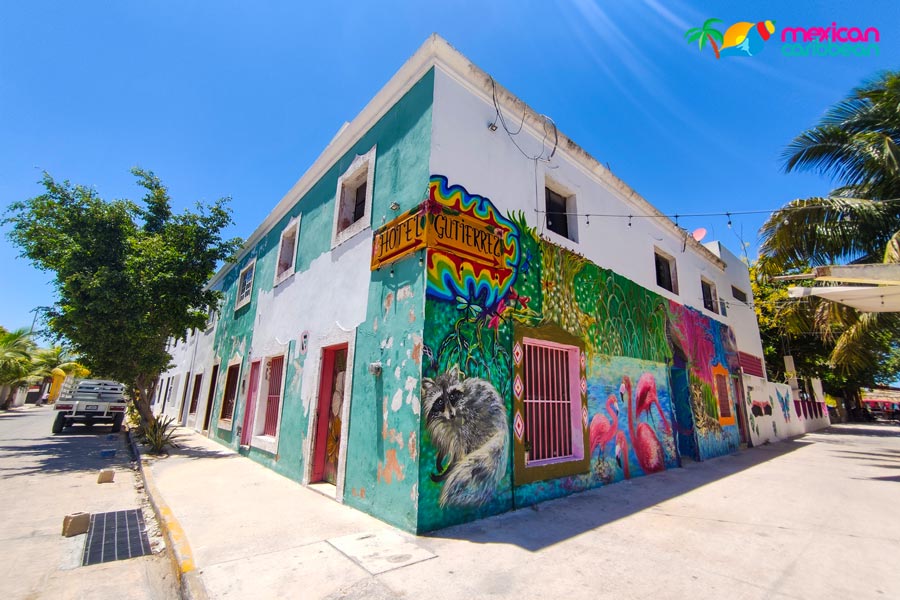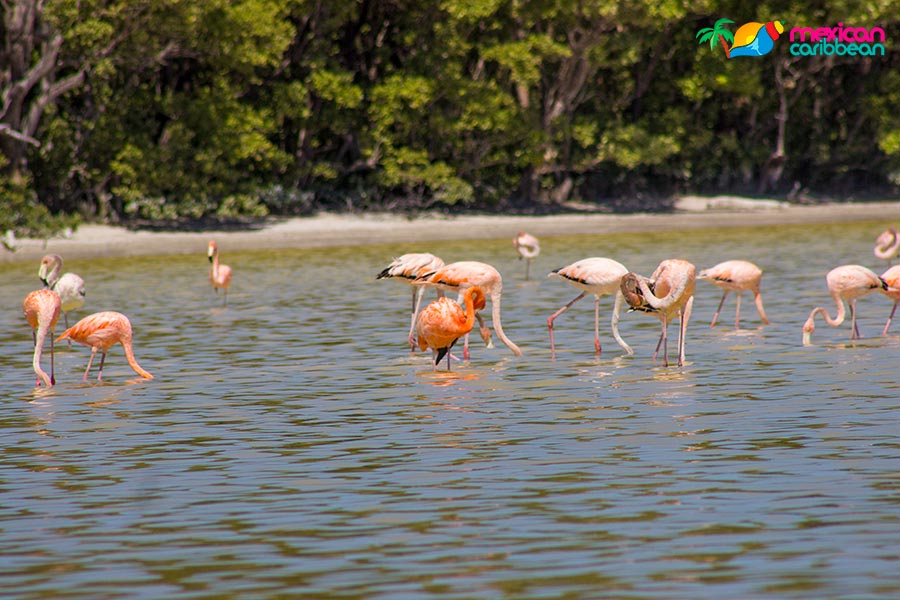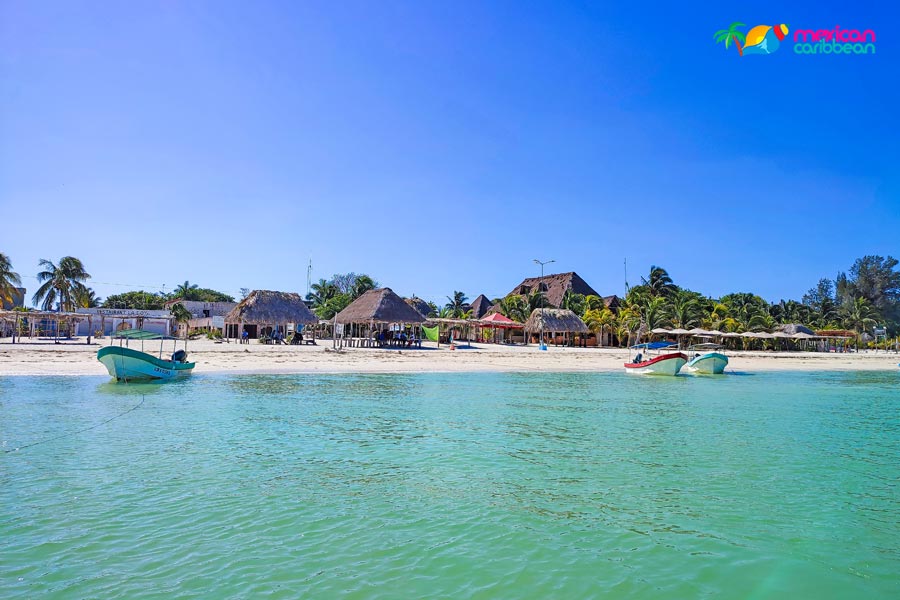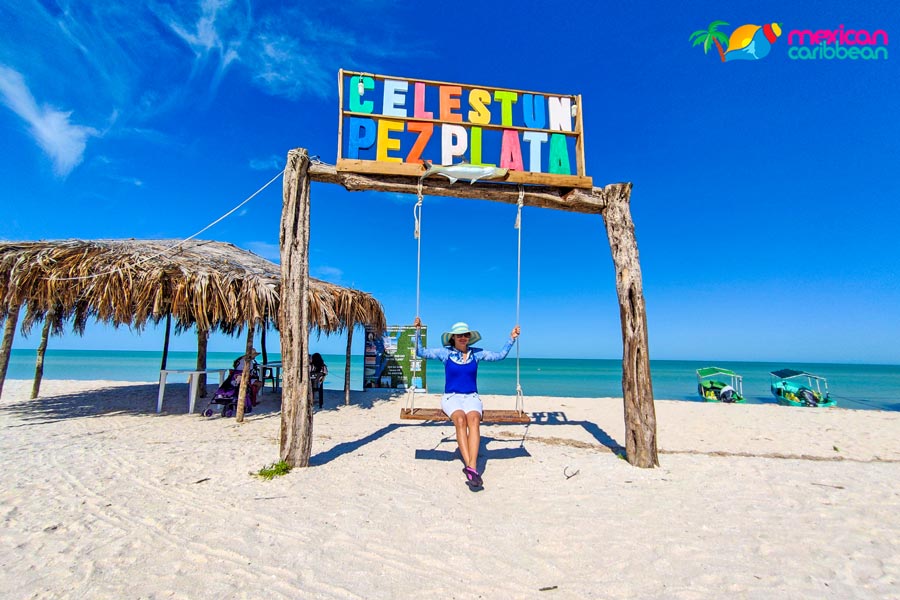On July 19th, 1979, the Federal Government decreed the Celestun Wildlife Refuge. Because of its importance as the main feeding area for the American Flamingo and countless species of waterfowl and shorebirds, its status was upgraded to that of a Special Biosphere Reserve in 1989.
The Special Biosphere Reserves are representative zones of one or more ecosystems that haven't been altered by man. These areas are the habitat to endemic, and/or species threatened with extinction. Today, Mexico has 44 National Parks, 13 Special Biosphere Reserves, 16 Biosphere Reserves, 8 Protected Areas, 3 Natural Monuments and 2 Marine Parks.
Location
90 km. (56 miles) west of Merida, Yucatan (route 281) and/or 216 km. (134 miles) to the north of Campeche, Campeche (route 180), towards the western tip of the Yucatan Peninsula in the Gulf of Mexico.
Size
59,130 hectares (146,000 acres) shared by two states: 25,000 hectares (61,800 acres) belong to the state of Yucatan (Municipio de Celestun) and the rest, 34,130 hectares (84,300 acres), to Campeche (Municipio de Calkiní).

The Town
Celestun means "painted stone". It is a picturesque coastal traffic port, with a revolving reflector lighthouse, 12 meters (39 feet) high, signaling 4 intermittent flashes. Its inhabitants, about 4,600, still preserve the traditions and folklore of the Mayan fisher folk.
Economic Activities
Fishing (octopus, grouper, dogfish and king crab), salt extraction, agriculture (corn and citric), day tourism and, increasingly , ecotourism.
Climate
Warm and semi arid. The annual mean temperature is 26.5 ºC (80 ºF), the hottest month being May with an average 29 ºC (84 ºF) and the coolest, January, with 23 ºC (73 ºF).
The annual precipitation goes up to 777 mm (30 inches). The highest monthly average rainfall is in September with 166 mm (6.5 inches) and the lowest in March with 5.2 mm (0.2 inches). More than 80% of the precipitation occurs during the months of June to September.
Habitats
Coastal dune scrub (11%):
You can distinguish two large groups of vegetation in this zone: 1) the coastal or haliphilous dune vegetation that grows near the beach and is tolerant to extreme conditions such as high salinity, strong winds and tides, and 2) the spiny thicket that is less tolerant to sudden environmental changes and thus grows inland. In Celestun, you can find an interesting mixture of tropical savanna, low tropical subdeciduous forest and tular vegetation and find exotic species of palm trees, cactus, bromelias and orchids.
Estuary (9%):
The "Ría de Celestún", as the estuary is locally called, is 22.5 Km. (14 miles) long and has an average width of 1.25 Km. (0.8 miles). It displays an exceptional landscape created by the unusual combination of natural resources, flora and fauna that constitute an ecosystem representative of the dry tropics. Its shape is rectangular and stretches out from northeast to southwest. The communication with the Gulf of Mexico is through a narrow mouth, 0.46 Km. (0.3 miles) wide, in the farthest southern part of the lagoon.
Mangrove forest (59%):
The mangrove swamps are among the most productive ecosystems on Earth. The mangroves are highly efficient converters of sunlight into organic material. This material in turn feeds countless invertebrates, which are themselves consumed by numerous fish, bird and mammal species.
Mangroves are resistant to salt water, and thus prosper where other plants do not. They are also uniquely adapted to anaerobic (oxygen poor) soil conditions. The black mangrove (Avicennia germinans) sends up straw-like shoots that bring oxygen to its roots; the red mangrove (Rhizophora mangle) has similar "breathing holes" in its arching, aerial roots.
Petenes or "hummocks" (2%):
Ecosystems by themselves, hummocks are "islands of vegetation", endemic only in three parts of the world: the Yucatan Peninsula, Cuba and southern Florida. The life of these ecosystems turns around a cenote or fresh water spring. They are home to many species of wildlife and its main characteristic is the presence of precious hardwood like Chicle (Manilcara zapota), Chaca (Bursera simaruba), Tulipán (Malvaviscus arboreus), Cedar (Ficus tecolutensis) Anona (Annona glabra) and Sabal (Sabal yapa), among others, which grows up to 25 meters (82 feet) or higher. The fact that they only exist in three relatively small regions of the world awards them with an extraordinary value that justifies the demands of guaranteed conservation.
Marshes (5%)

Wildlife
Main wintering area for greater flamingos, nesting beaches for endangered sea turtles, endemic plants and birds in coastal dune scrubs; estuary "nurseries" for countless fish and marine species; highly productive mangrove communities; two endangered crocodile species; migrant and wintering waterbirds, shorebirds and songbirds.
The birds: Over 300 bird species can be found in Celestun's Special Biosphere Reserve: cardinals, orioles, motmots, woodpeckers, hummingbirds, flycatchers, kingfishers, cormorants, magnificent fregate birds, herons, egrets, white ibises, wood storks, ospreys, hawks, vultures, sandpipers, roadrunners, owls, pelicans, etc. There are some endemic birds such as the Yucatan wren, the black-throated bobwhite and the Mexican sheartail hummingbird. Celestun is considered the fourth largest wintering ground for ducks in the Gulf region. In winter you're likely to observe over 13 migrant duck species. But surely the most popular bird and the most sought after is the Pink Flamingo (Phoenicopterus ruber ruber) The flamingo is one of the most graceful and spectacular birds, but also one that depends on a fragile ecosystem - hypersaline lagoons - for survival. The Northern Hemisphere's only mainland flamingo population lives along the North and West Coast of the Yucatan Peninsula.
The flamingo feeds and nests in flocks of several thousand birds huddled together in knee-deep water or wading along muddy salt flats. It feeds on small organisms that it filters from the water through a complex mechanism in its large, specially adapted bill.
Turtles: From the 8 species surviving in the world, 7 exist in Mexico and 4 nest in the coasts of the Yucatan Peninsula: Green turtle (Chelonia mydas mydas), loggerhead turtle (Caretta caretta), hawksbill turtle (Eretmochelys imbricata) and leatherback turtle (Dermochelys coriacea). They spend their whole life in the water except for the brief moments the females come ashore to nest and lay their eggs.
A female sea turtle arrives ashore at her nesting beach at night in the months of April, May, June or July. She might nest two or four times during a single nesting season. Though she is fast and well suited to the water, she is slow, awkward and in danger on land. She drops about one hundred white eggs that look like ping-pong balls into a hole that she previously scooped out using her back flippers. When she finishes, she covers the nest with sand and slowly lumbers back to the sea. The eggs are ready to hatch about two months later.

All eight species are endangered or threatened. They are killed for meat and leather; their eggs are taken for food and aphrodisiacs. Their nesting sites are destroyed for industrial development. They are ground up by dredges, run over by pleasure boats, poisoned by pollution, strangled by trash and drowned by fishline and net.
Crocodiles: There are two crocodile species in Mexico, the american crocodile (Crocodylus acutus) and the moreleti crocodile (Crocodylus moreleti). The latter is found in the Celestun estuary. Despite their armor, which protects them from most predators, all crocodilians are threatened by extinction. Hunting them for their skins for luxury leathers and destruction of their habitat have made humans responsible for their precarious situation.
The order Crocodylia includes 3 families of the largest reptiles living today. They are a living vestige of a group called archosaurus of the Mesozoic Era which dates back 225 to 65 million years. Their most characteristic features are internal. Despite their ancient history, they are the most advanced reptiles, having an enlarged brain and cerebral cortex indicating their increased ability to learn.
Other important reptiles can be found in the region such as land turtles, boa constrictors, iguanas and geckos.

How to get here
Public buses leave on the hour every hour from the corner of Calle 50 and 67. If driving from Merida, head south to Uman and turn right at the plaza there, or head towards the west from Merida past Caucel to Hunucmá.
What to do in celestun
Boat rides: Take a boat trip out to the estuary or ría and admire the impressive waterbird populations. As many as 18,000 flamingos can be seen at once, offering an incredibly pink spectacle. Explore the mangrove swamps and plunge in one of the beautiful sweet water springs.
The Beach: Celestun boasts long stretches of pristine beaches. It is a superb place to avoid the crowds and enjoy the sun, sand and the warm emerald green waters of the Gulf of Mexico.
Seafood: No stay in Celestun is complete without a visit to one of the sea front restaurants specializing in fresh, locally caught seafood.
Birdwatching: "Birders" look for more than just flamingos in Celestun. Up to 320 species of birds have been recorded. A tour lasts six to seven hours. Part of the tour is by land and part by water.
Fishing: You won't return to your hotel barehanded after this tour! The richness in zoo and phyto plancton of the Gulf of Mexico assures you a very good catch. Besides, the chef will be delighted to prepare your seizure to your taste.
Night boat rides: This exciting tour allows you to see animals that you normally don't see during the day. They hunt at night while others sleep: crocodiles, boat-billed heron, yellow-crowned night heron, great-horned owl, etc. The boat ride lasts approximately 2 1/2 hours and covers about 30 km. (18 miles) of the estuary.
Celestun do's and don'ts
DO take a boat trip to see the flamingos and other wildlife on the estuary, but DON'T ask your boatman to force the flamingos into flight (it's illegal!).
DO take a night beach walk in summer or fall, looking for nesting or hatching sea turtles, but DON'T disturb the turtles if you find them.
DON'T leave Celestun without trying its seafood!